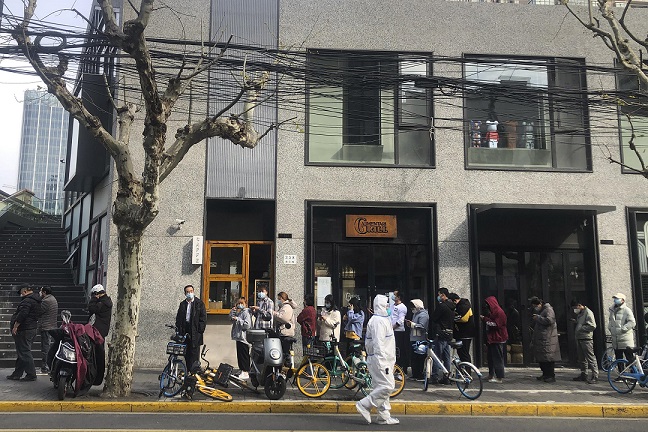Approximately 16 million inhabitants of Shanghai are being tested for the coronavirus as part of the second stage of the lockdown, which was extended Friday to the western half of the country’s largest metropolis and financial centre, Beijing.
The lockdowns on residents of Shanghai’s eastern districts, who were meant to be freed from quarantine after four days, may be prolonged if further COVID-19 cases are discovered in their homes, according to authorities.
The lockdown in Shanghai, which will be carried out in two parts over eight days to allow for testing of the whole population, has shook global markets, which are concerned about the potential economic effect on the city. In March, according to a monthly survey released Thursday, China’s manufacturing activity dropped to a five-month low due to factory lockdowns and other restrictions that prompted enterprises to halt operations.
Residents of Puxi, which is located on the west bank of the Huangpu River, which divides Shanghai, will be unable to leave their neighbourhoods or housing complexes for the next four days beginning Friday. Some complexes had their gates sealed from the outside, and food and meals were being transported to pickup points in other areas.
Residents were urged to report to designated testing sites, where they were met with long lines and waits of more than 90 minutes. Government workers and volunteers wearing full protective equipment went door-to-door with megaphones in the city of 26 million people, calling on residents to report for testing.
The National Health Commission of China said on Thursday that a further 1,787 domestic cases of COVID-19 had been detected, with 358 of them occurring in Shanghai. Another 5,442 people tested positive for the virus but did not get sick, including 4,144 people in Shanghai.
People who tested positive but did not show any signs of illness are being sent to temporary isolation facilities, which include gymnasiums and exhibition halls.
Several modes of public transportation have been halted, and highways have been shuttered, putting the typically busy city to a complete halt. While city residents are being advised to remain in their homes, airports and railway terminals remain open for business.
The shutdown shows China’s continued devotion to its “zero-COVID” policy, despite the relaxation of restrictions in other parts of the world. was the first to be discovered
Some Chinese have criticised the regulations as being excessive, while there has been little open rebellion of the government’s policies. In the midst of the clamour, Shanghai officials have admitted that they made mistakes in their management of the omicron variant’s spike, which resulted in panic shopping that depleted store shelves of supplies.
A top Shanghai official, Ma Chunlei, said at a press conference on Thursday that the city had not prepared enough. “We truly acknowledge and accept the public’s comments, and we are making every effort to make it better.”

